© 2025 MJH Life Sciences™ , Patient Care Online – Primary Care News and Clinical Resources. All rights reserved.
Hypertension Guidelines 2017 & 2014 Revisions: Estimated Impact on CV Events and Deaths in US Adults
What impact could the latest 2017 hypertension guidelines have on your patients? Click through our quick slideshow to find out.
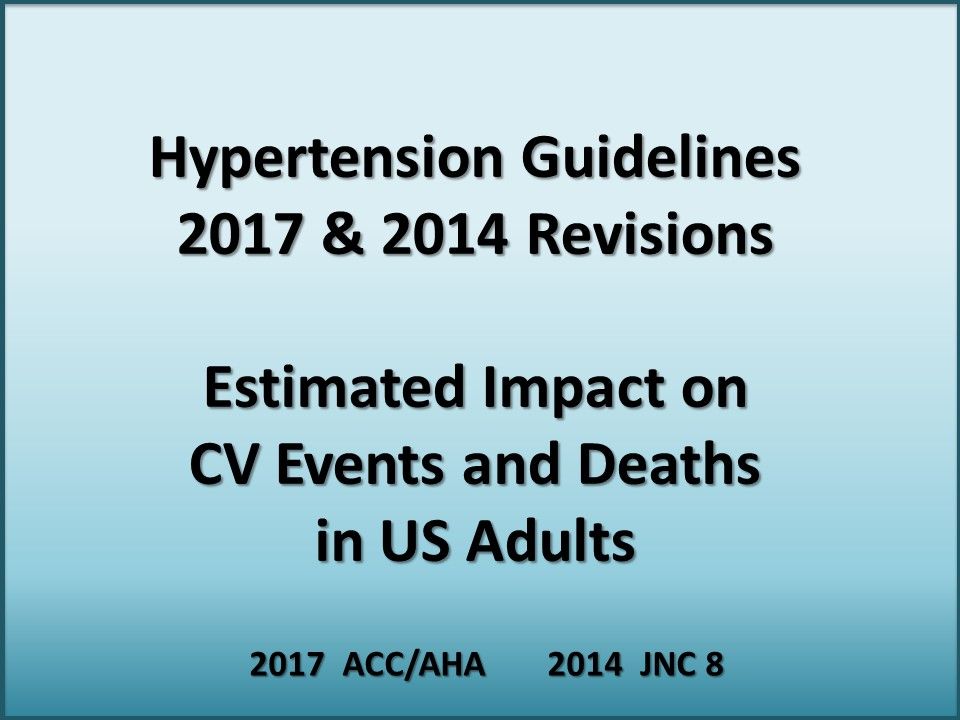
Joshua Bundy, PhD, MPH, and colleagues from multiple centers in the US have examined national data to determine the effect of the latest 2017 hypertension guidelines, issued by the American College of Cardiology/American Heart Association (ACC/AHA), on cardiovascular events and outcomes in US adults. The authors then compared those results with the estimated impact on the same population of guidelines issued in 2014 by the Eighth Joint National Committee (JNC 8). Click through the slides for details on the analysis and take home messages for your practice.
For more information: Bundy JD, Mills KT, Chen J, et al. Estimating the association of the 2017 and 2014 hypertension guidelines with cardiovascular events and deaths in US adults: An analysis of national data. JAMA Cardiol. 2018.
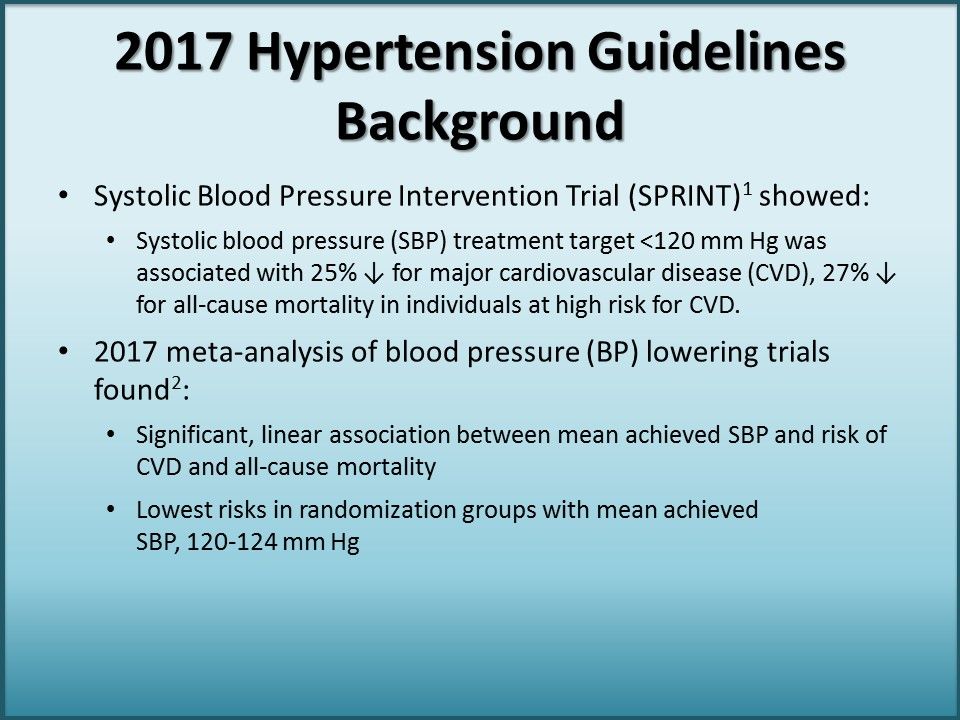
2017 Hypertension Guidelines Background. SPRINT trial showed that a SBP treatment target <120 mm Hg was associated with a 25% decrease for major CVD disease and a 27% decrease for all-cause mortality in people at high risk for CVD. In a 2017 meta-analysis of BP lowering trials, there was a significant linear association between mean achieved SBP and risk of CVD and all-cause mortality with the lowest risks in randomization groups with mean achieved SBP between 120 and 124 mm Hg.
Reference: 1. Wright JT Jr, Williamson JD, Whelton PK, et al; SPRINT Research Group. A randomized trial of intensive versus standard blood-pressure control. N Engl J Med. 2015;373:2103-2116.
2. Bundy JD, Li C, Stuchlik P, et al. Systolic blood pressure reduction and risk of cardiovascular disease and mortality: a systematic review and network meta-analysis. JAMA Cardiol. 2017;2:775-781.
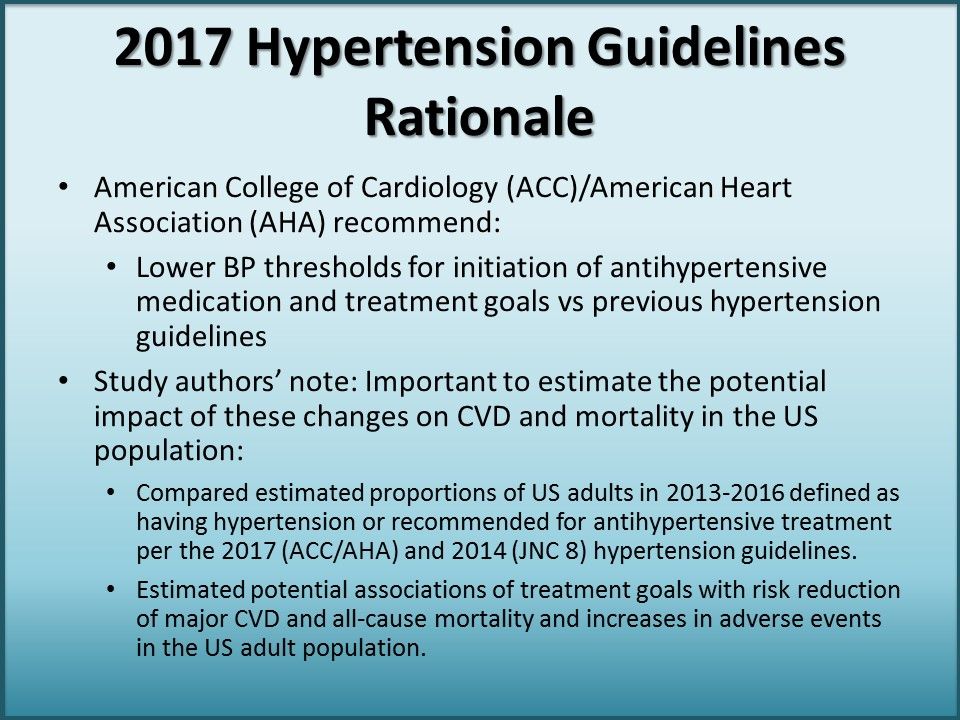.jpg?fit=crop&auto=format)
2017 Hypertension Guidelines Rationale. The authors of the study sought to compare estimated proportions of US adults in 2013 through 2016 defined as having hypertension or recommended for antihypertensive treatment per the 2017 and 2014 guidelines. They also sought to estimate the potential association of treatment goals with risk reduction of major CVD and all-cause mortality and increases in adverse events in the US adult population.

The Study. SBP categories: (<130 mm Hg, 130-134 mm Hg, 135- 139 mm Hg, 140-144 mm Hg, 145-149 mm Hg, 150-154 mm Hg, 155-159 mm Hg, and ≥160 mm Hg).
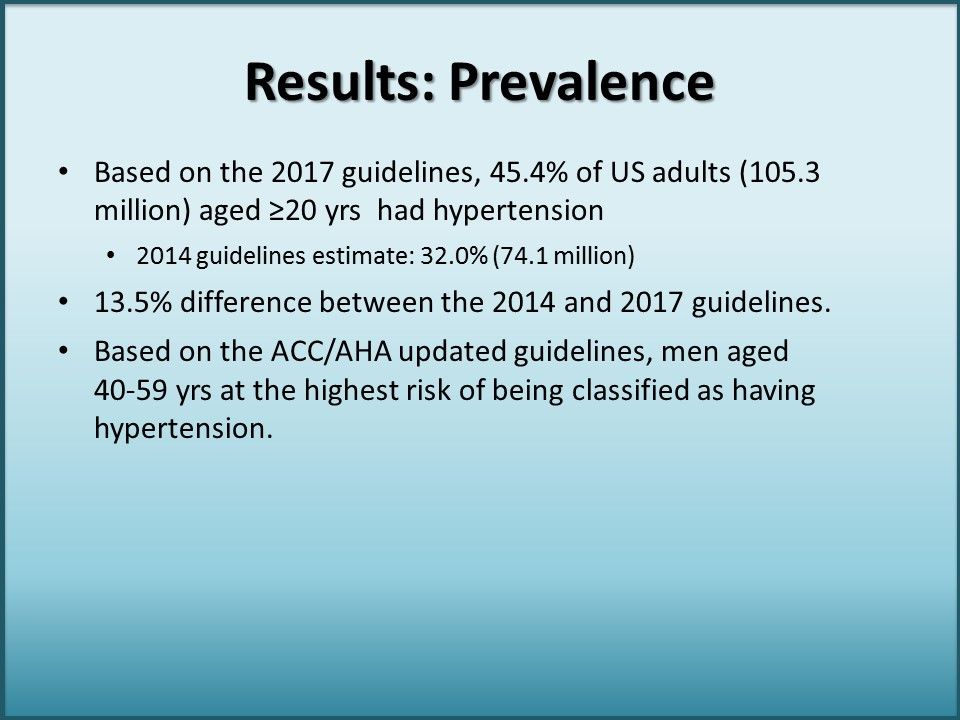
Results: Prevalence. Based on the 2017 guidelines, 45.4% of US adults (105.3 million) aged ≥20 years had hypertension vs 32.0% (74.1 million) estimated in the 2014 guidelines. Based on the ACC/AHA updated guidelines, men aged 40-59 years are at the highest risk of being classified as having hypertension.
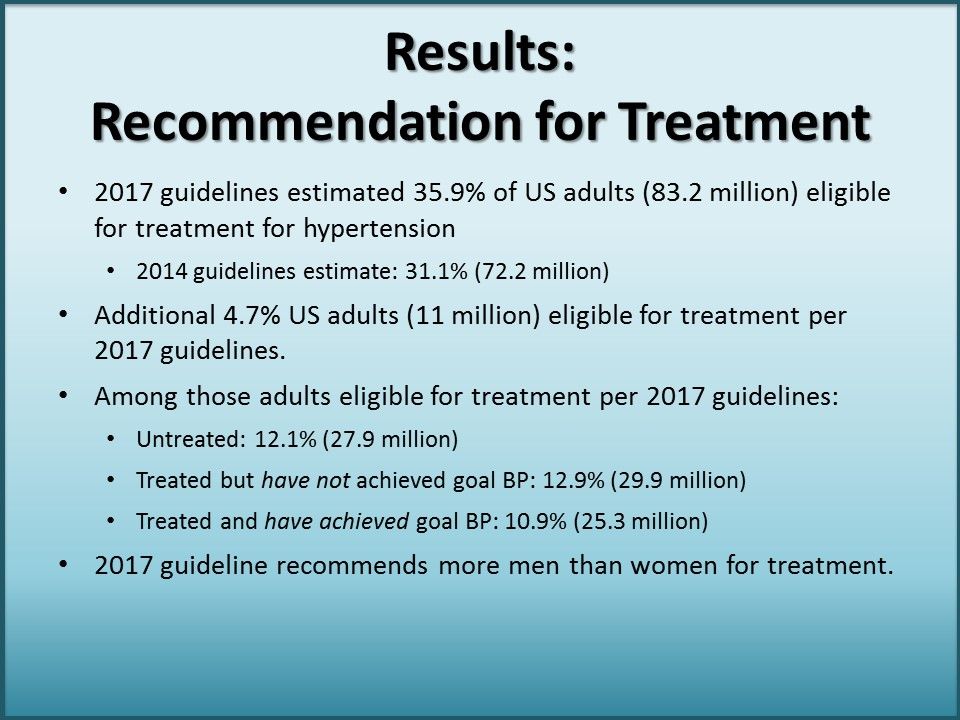
Results: Recommendation for Treatment. And among those recommended for treatment per the 2014 guideline:
- Untreated: 7.3% (16.9 million)
- Treated but have not achieved goal BP: 6.1% (14.2 million)
- Treated and have achieved goal BP: 17.7% (41.0 million)
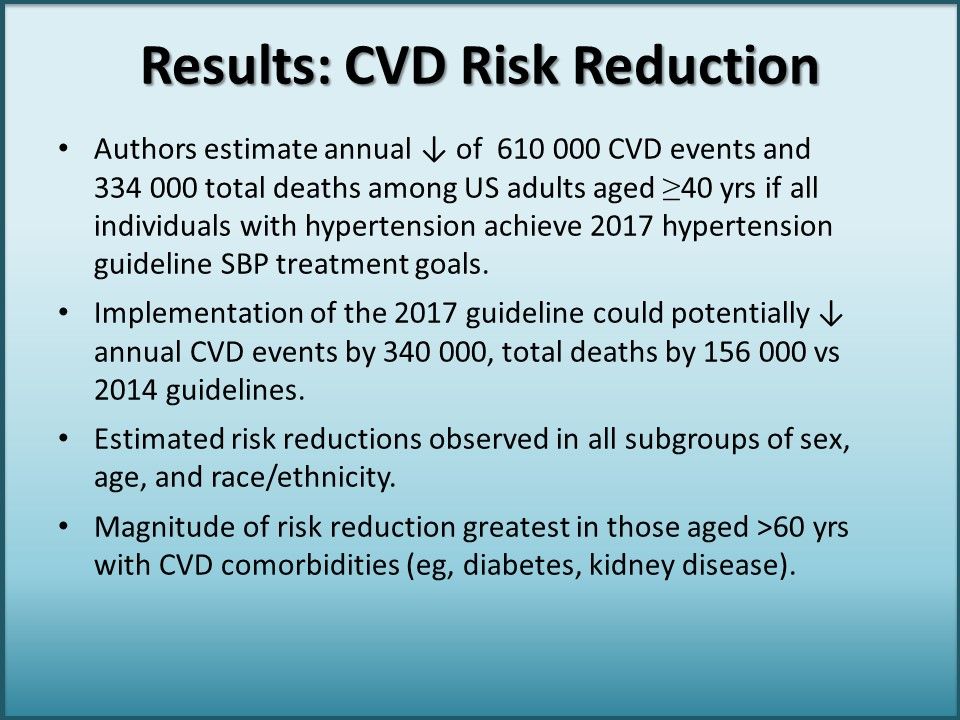
Results: CVD Risk Reduction. The corresponding events for the 2014 guidelines were: Reductions of CVD and all-cause mortality were 270 000 and 177 000, respectively. According the 2017 guidelines, the number needed to treat to prevent 1 major CVD event was 70 in sex, age, and race/ethnicity subgroups vs 88 according to the 2014 guidelines.
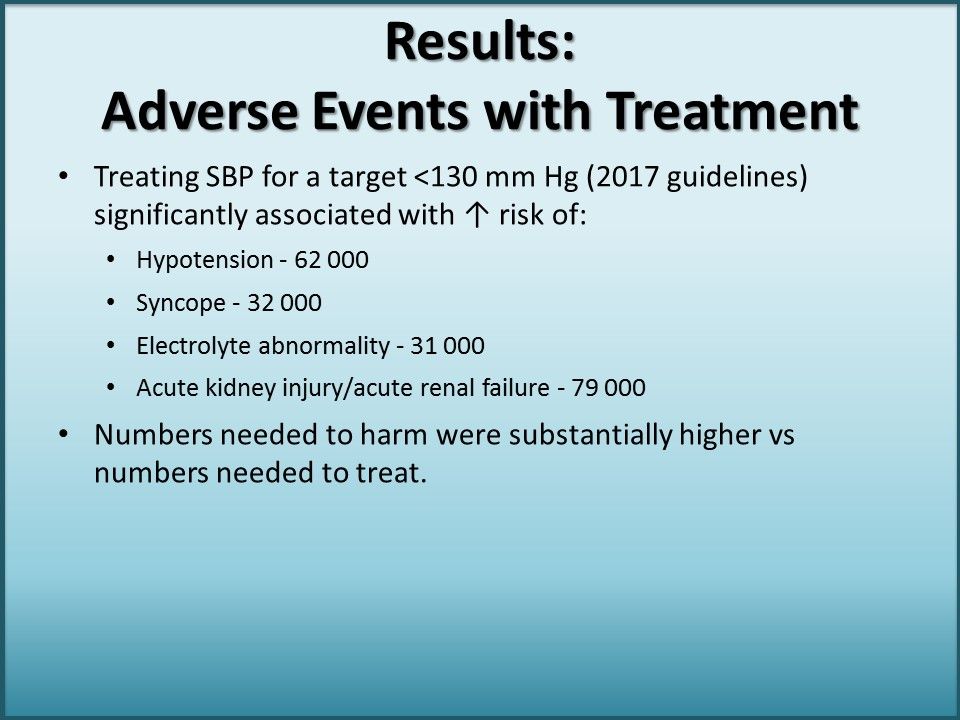
Results: Adverse Events with Treatment. Treating SBP for a target <130 mm Hg, according to the 2017 guidelines, was significantly associated with an increased risk of:
- Hypotension - 62 000
- Syncope - 32 000
- Electrolyte abnormality - 31 000
- Acute kidney injury/acute renal failure - 79 000
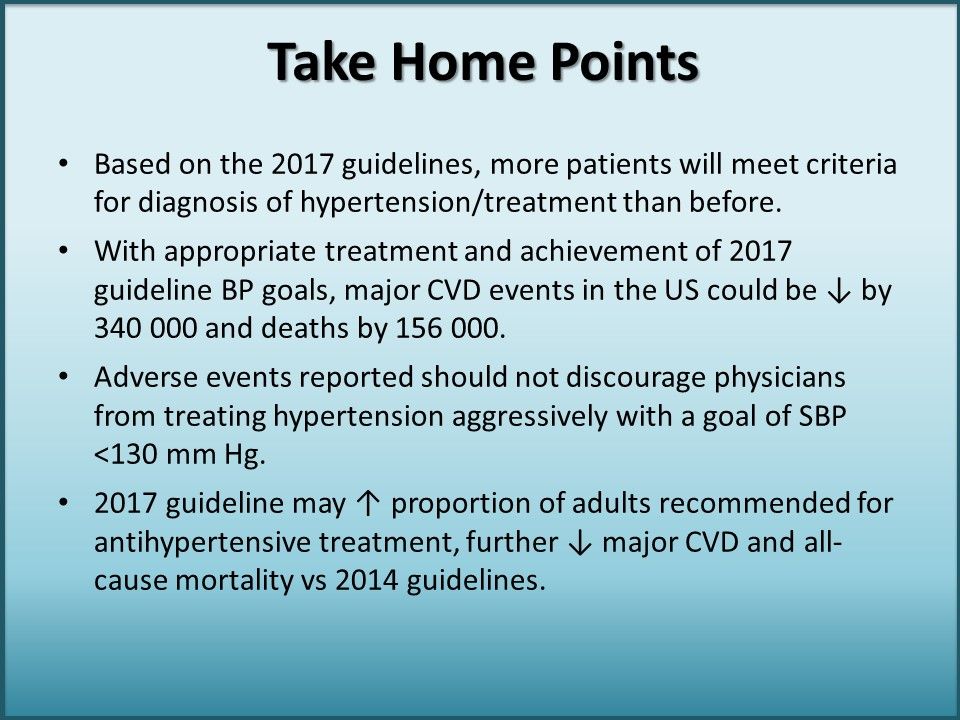
Take Home Points:
- Based on the 2017 guidelines, more patients will meet the criteria for hypertension/treatment than before.
- With appropriate treatment and achievement of the 2017 guideline BP goals, major CVD events in the US could decrease by 340 000 and deaths by 156 000.
- Adverse events reported should not discourage physicians from aggressively treating hypertension with a goal of SBP <130 mm Hg.
- The 2017 guidelines may increase the proportion of adults recommended for antihypertensive treatment and further decrease major CVD and all-cause mortality vs 2014 guidelines.
